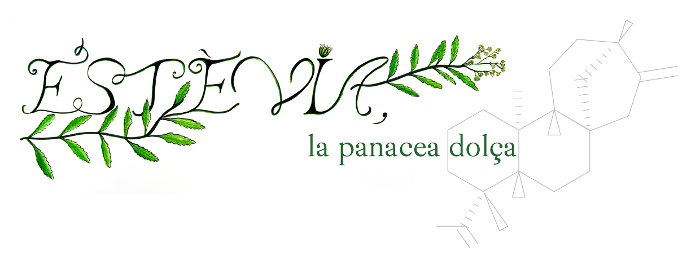
Sweeteners are an important chapter in the history of food. Apart from giving a sweet taste to many foods, they have also been used to preserve food through marmalade preparation and to elaborate medicines. Likewise, they have defined a very dynamic and influential sector in the world of economics and food technology.
Within this context and in a moment when obesity is one of the most alarming diseases in developed countries, a zero-calories sweetener like stevia is presented in the food market like an almost revolutionary additive. Its name comes from the botanical term Stevia, assigned by the Valencian botanist Antoni Josep Cavanilles in honour of Pere Jaume Esteve, head of the chair ‘Herbes’ from UV General Study in mid XVI century.
The exhibition Stevia, the Sweet Panacea is the result of an interdisciplinary (or multidisciplinary) research which takes into account from botany, agronomy and dietetics until food technology and its comercialisation. The project’s main objectives are to make known the characteristics of the plant (Stevia rebaudiana) as well as the origin of its denomination and also open a debate on its usage and the consumption of natural and artificial sweeteners. Stevia, originally from Paraguay, is still a rarely known plant in Spain. Steviol glycosides, whose consumption as food additive (E-940) was authorised in November 2011 by the European Union, are extracted from it. Currently, efforts are being made for its acclimatisation in the Mediterranean Basin, mainly in Almeria but also in some Valencian towns (Pego, Sueca).
At the same time, the López Piñero Institute for the History of Science and Medicine and the Office of the Vice-Principal for Culture and Equality of the Universitat de València have created the audiovisual piece “Stevia, the Sweet Panacea”, made by TAU (Taller de Audiovisuales) directed by Empar Pons Barrachina and Àlvar Martínez Vidal. Accessible through the Internet, it collects testimonies from professionals and researchers in this field like Ximo Guillem and Carmel Ferragud (López Piñero Institute for the History of Science and Medicine, UVEG), Jaime Güemes (Keeper of the Botanical Garden, UVEG), María Luz López Terrada (Ingenio Institute UPV-CSIC), Xavier Martínez Monzó (UPV), Regina Monsalve (President of the Institution of Technical Agricultural Engineers of Valencia and Castellón), Miguel Ángel Domene (Cajamar Foundation), among others.











